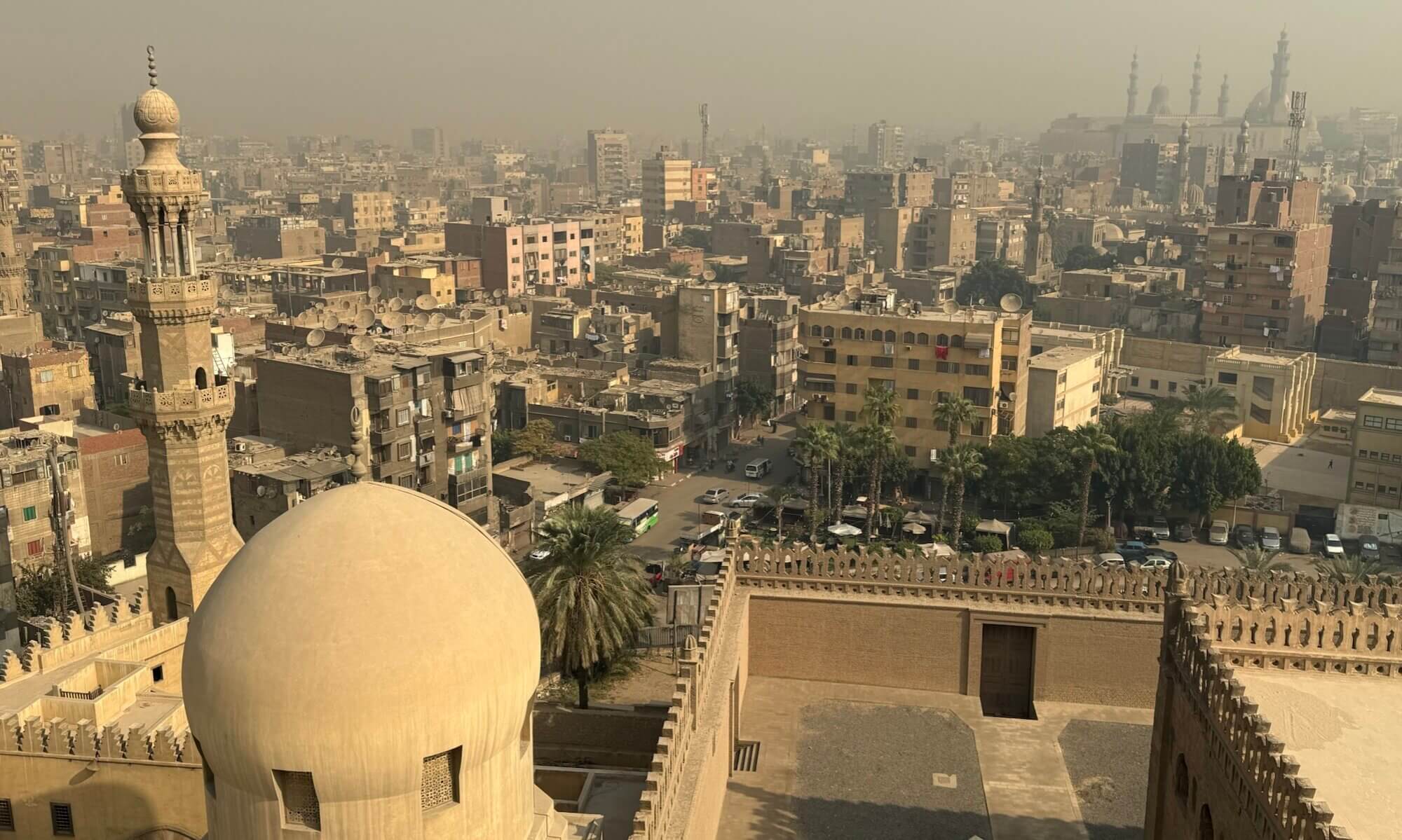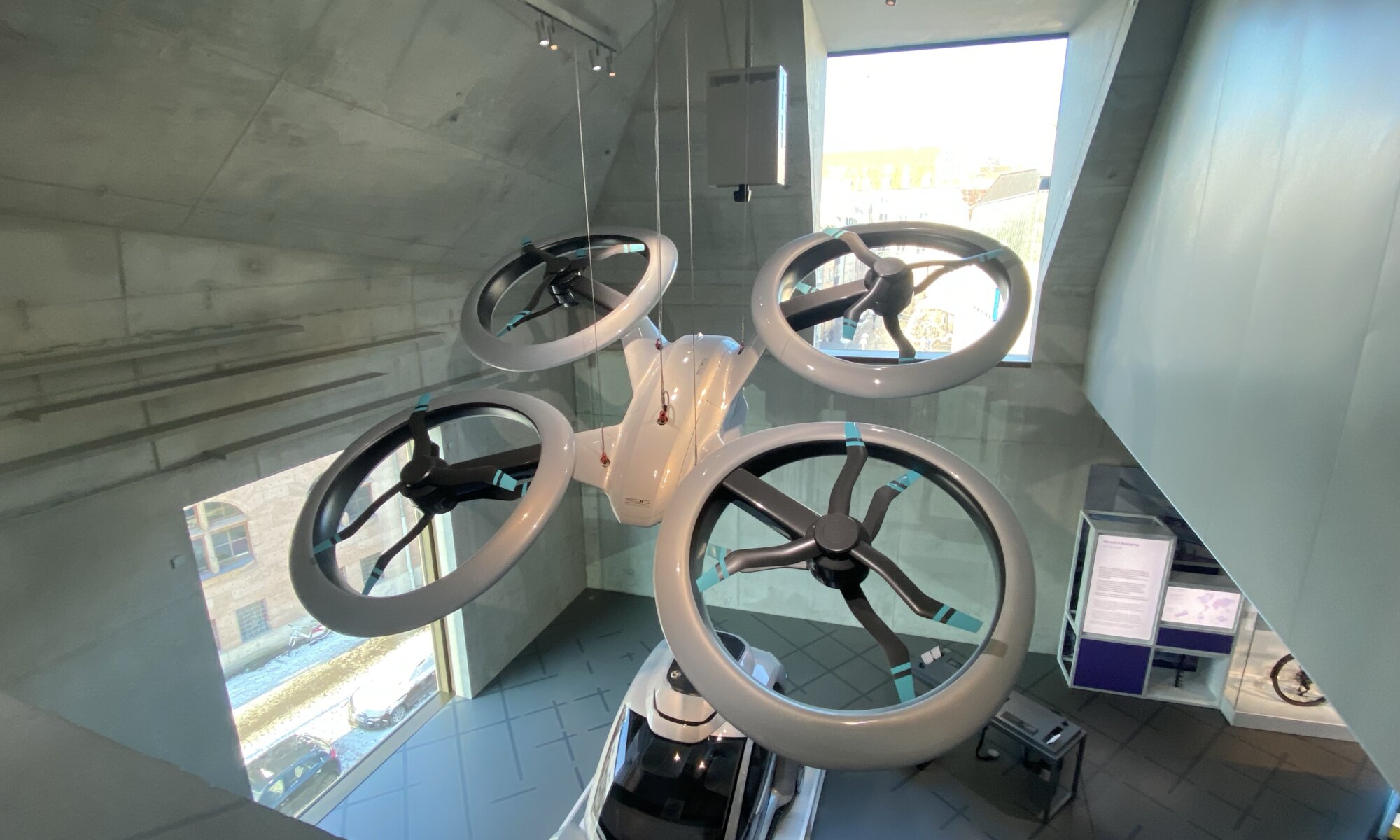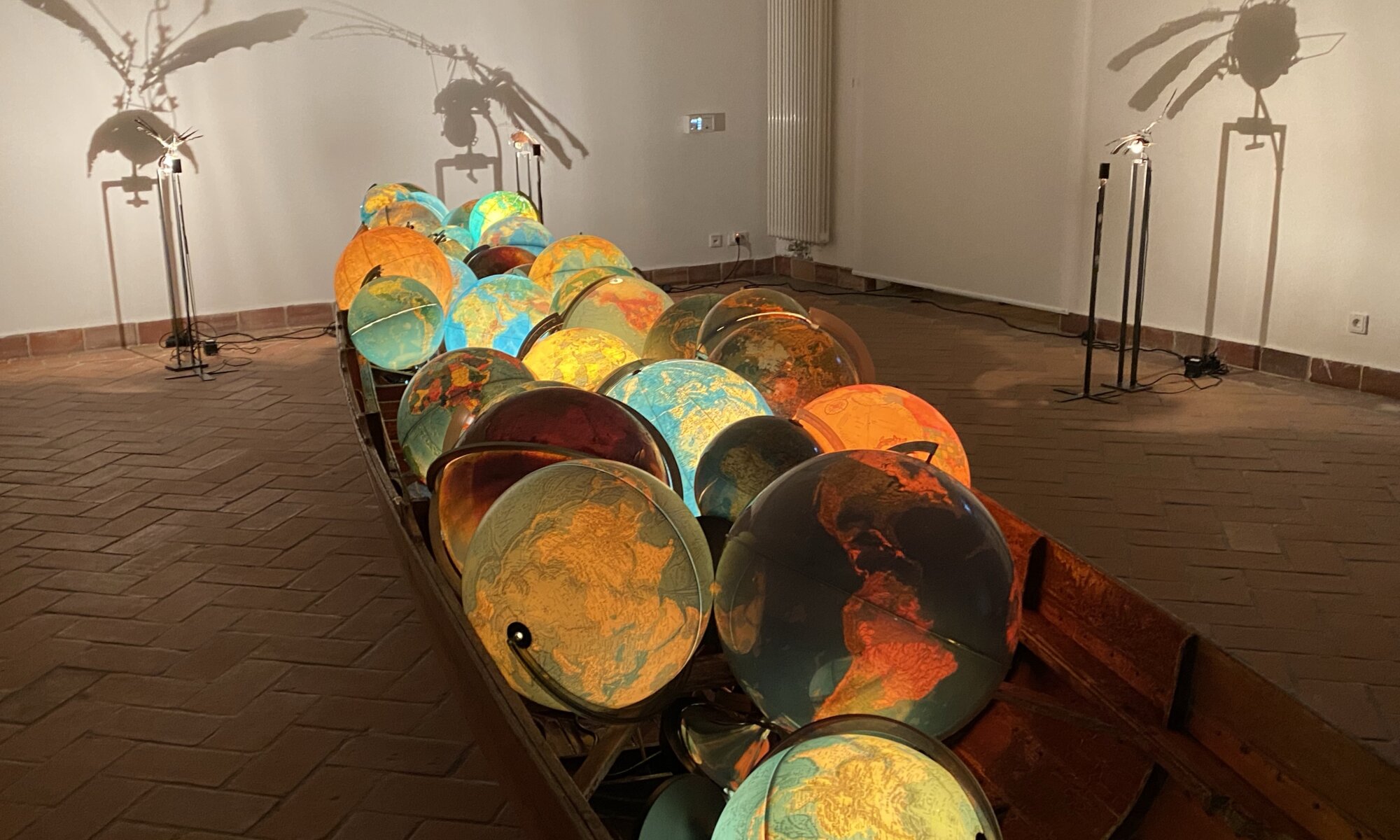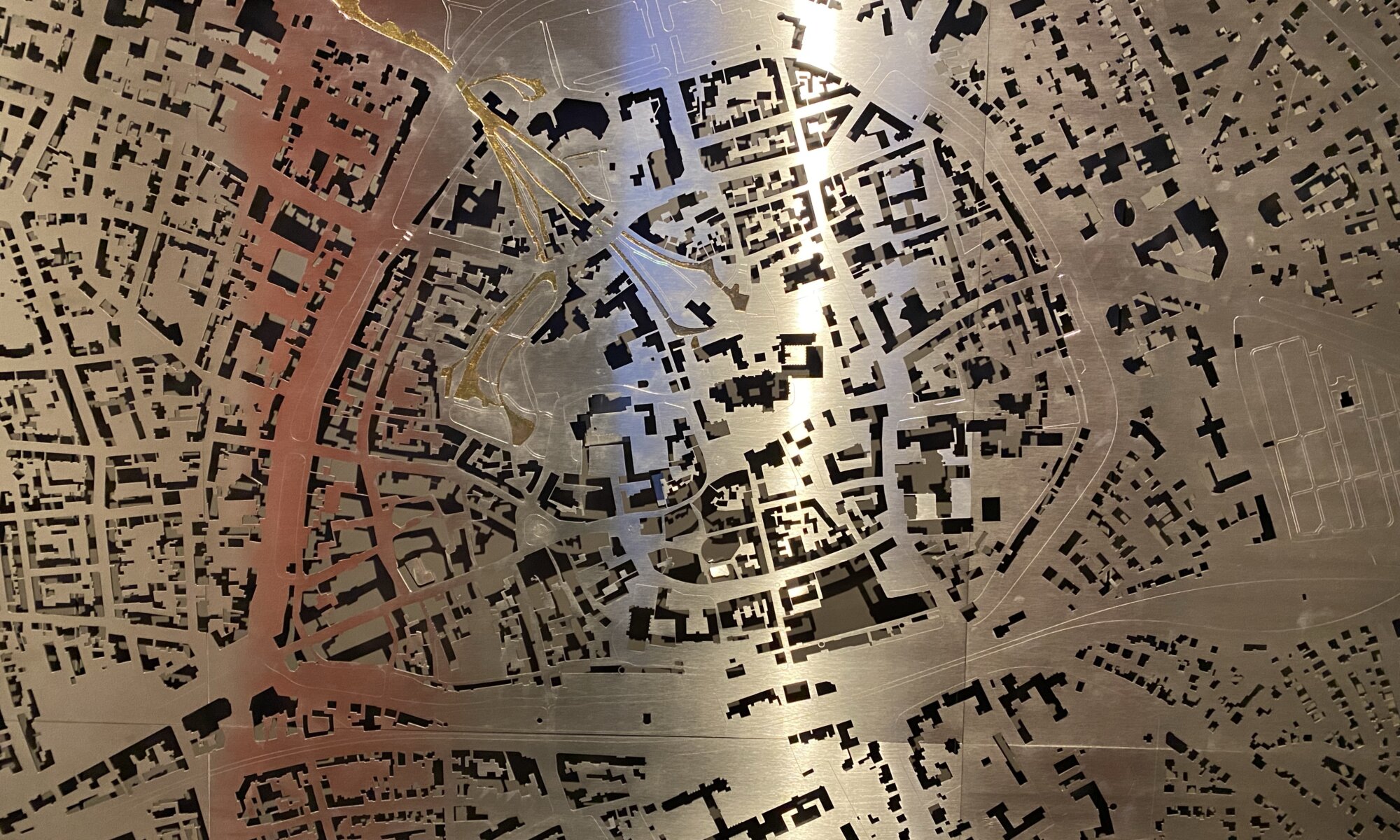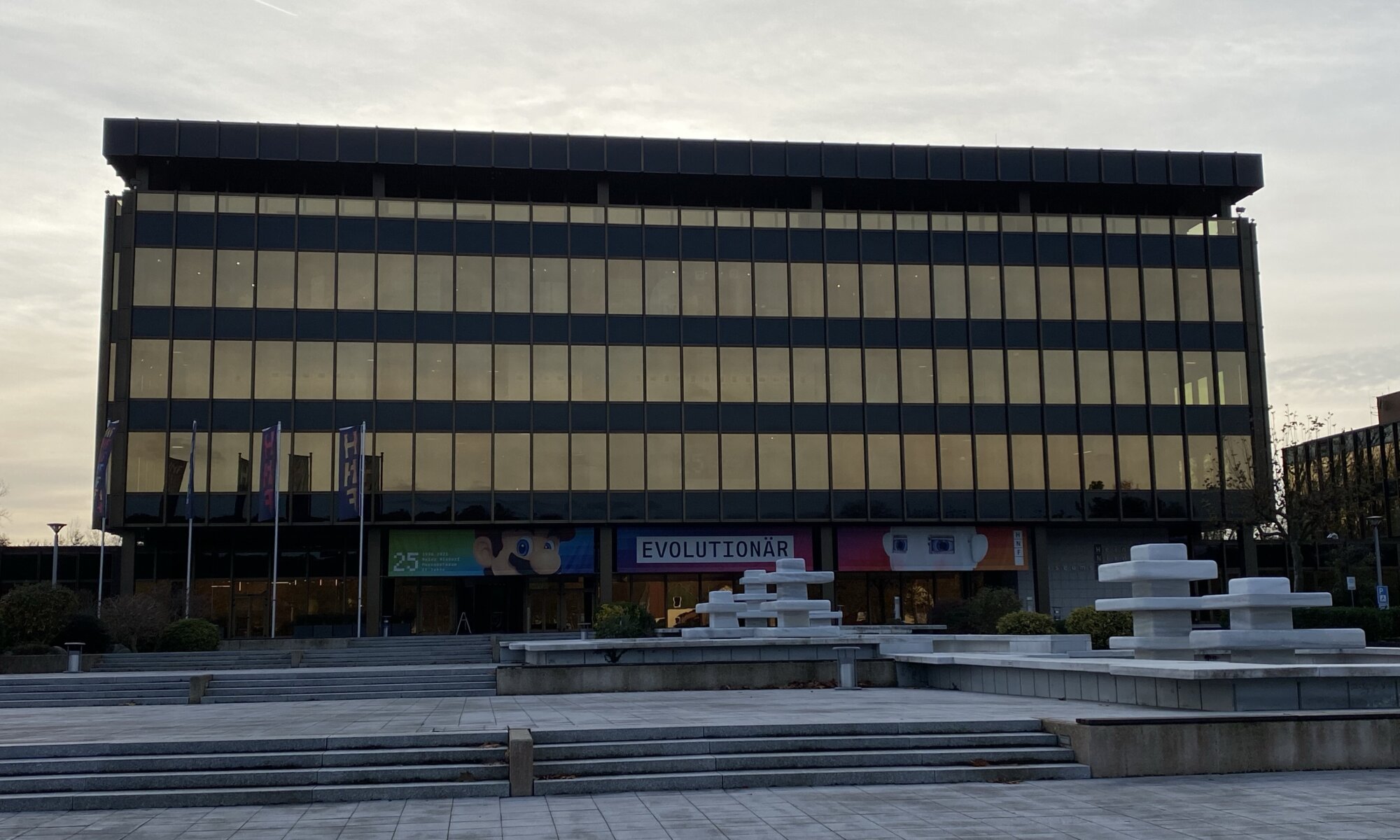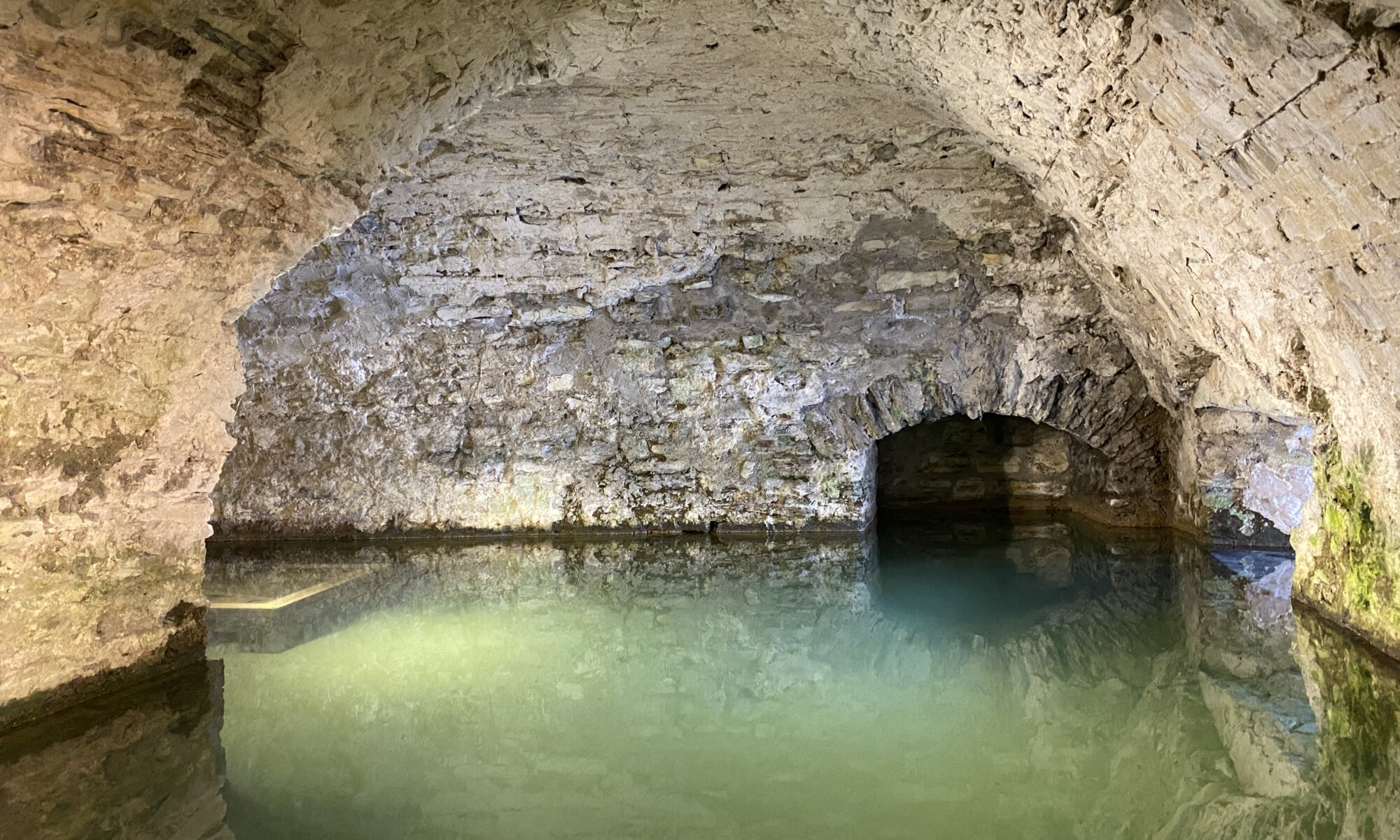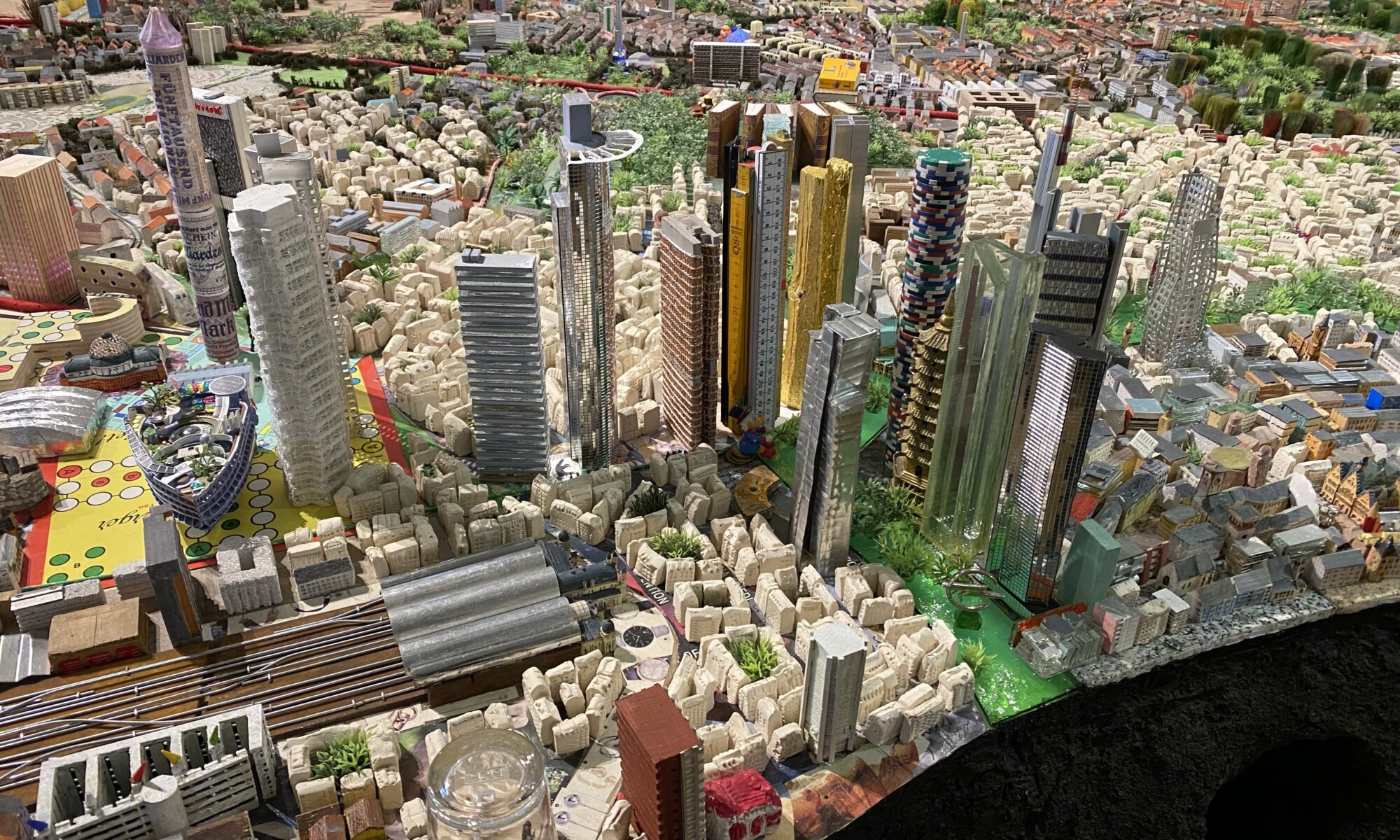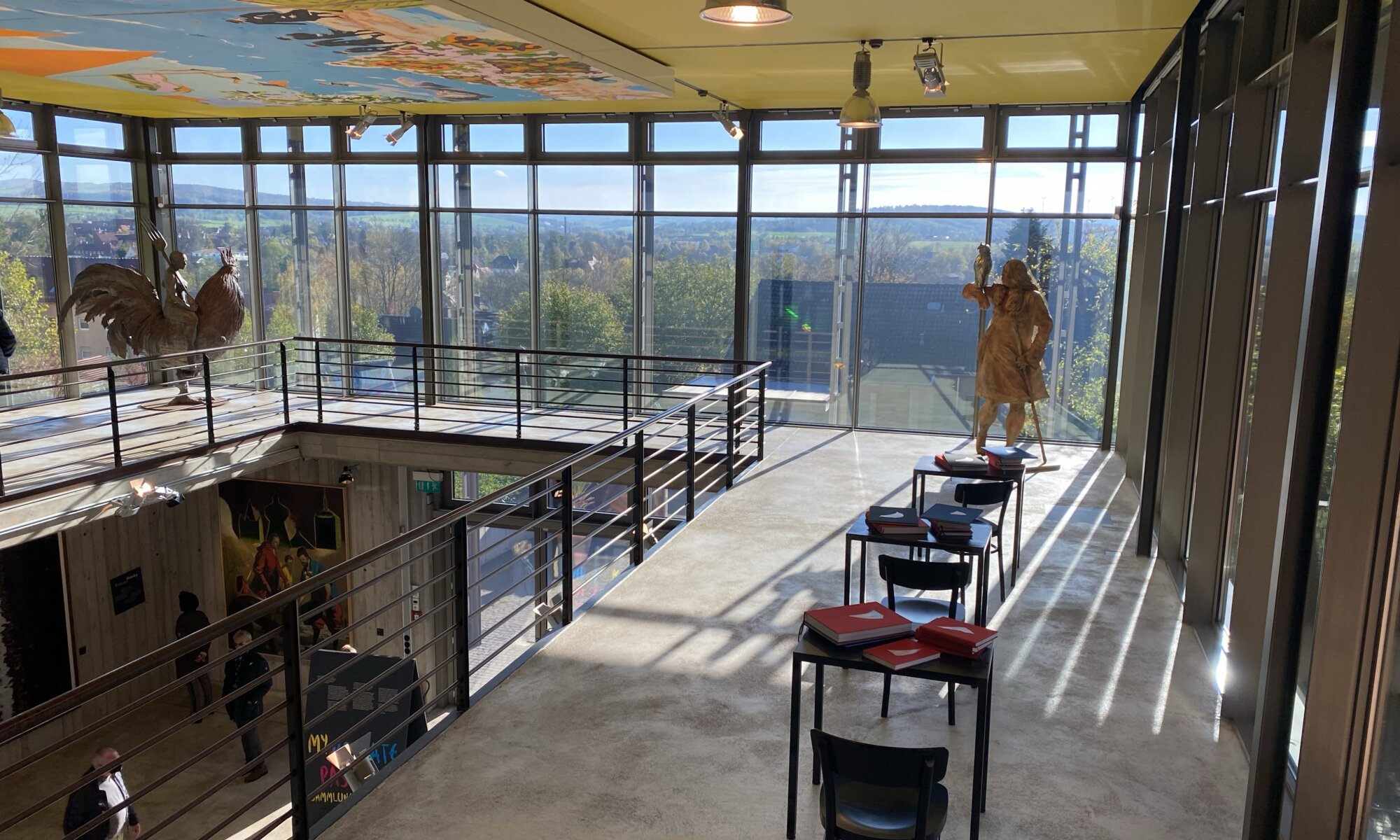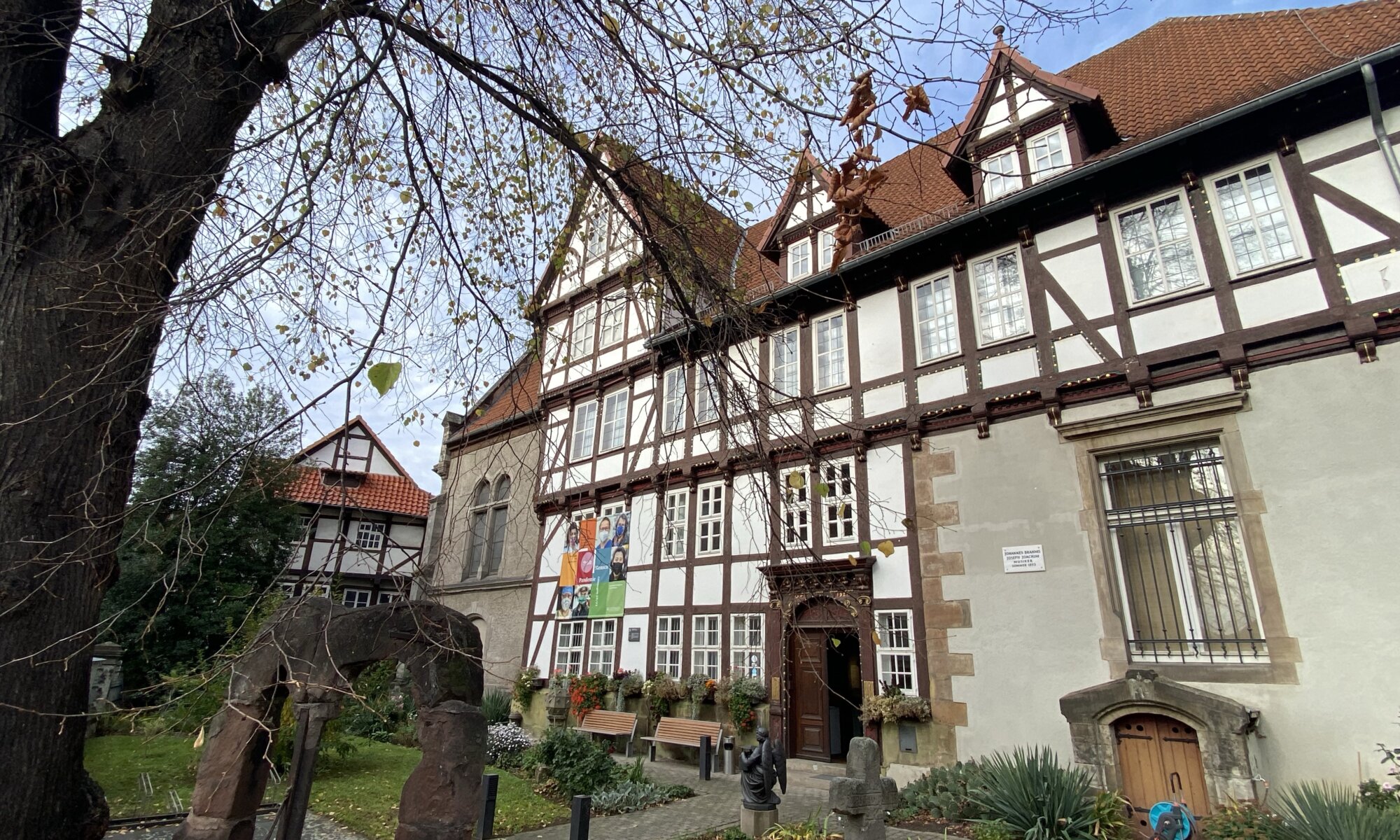The Deutsches Museum at München is well-known, but it also has four spin-offs: the Verkehrszentrum and Flugwerft not far away showing vehicles, an exhibition at Bonn and as the latest addition a museum at Nürnberg. The latter was opened in 2021 and is focused on a specific topic, the future. That is special as you can’t leave it as it is over time; you always have to adopt the exhibits to let them remain a window into the future.
Continue reading “The Future”Small but great
The city of Marburg an der Lahn, Germany, has only 74,000 inhabitants. But it is an university town with a long history and therefore has something unusual for a city of that size: a wonderful art museum. The building was created in 1925 to commemorate the foundation of the university 400 years ago and therefore named Jubiläumsbau. Within the institutes for art and culture were concentrated that were until then distributed throughout the city.
Continue reading “Small but great”Stadtgeschichte
For sure also Paderborn has a Museum für Stadtgeschichte that collects items from the history of the city. It was first located in the historic Adam-und-Eva-Haus, a half-timbered house north of the cathedral. In 2015 it moved to a modern building on the grounds of the former Abdinghof cloister. The museum is rather small but very modern.
Continue reading “Stadtgeschichte”Computing history
What many people don’t know is that the modern history of Paderborn is deeply connected to computing. In 1968 Heinz Nixdorf founded the Nixdorf Computer AG which was an important computer manufacturer. It was later acquired by Siemens and the name Wincor Nixdorf become later known mostly for Automatic Teller Machines (ATMs) and cash desk systems. We all have probably already withdrawn money at machines produced at Paderborn.
Continue reading “Computing history”Kaiserpfalz
In the 8th century Charles the Great created the Pfalz Paderborn as one of his seats. At was lost over time but in 1964 the basis of this ancient building was rediscovered during construction works. It has then been preserved and made visible – and directly next to it the LWL-Museum in der Kaiserpfalz has been built. This museum exhibits historic findings of the area underneath an amazing event location.
Continue reading “Kaiserpfalz”Now & then
Directly next to the Römerberg of Frankfurt am Main you will find two buildings that together form the Historisches Museum Frankfurt, a fantastic opportunity to learn more about the city at the river Main. It was founded in 1877 with the task to collect items that are relevant to the history of the city. Today it is a combination of at least three museums: the collectors museum exhibiting all the private collections donated to the city, the young museum for children and the city museum giving you insight into Frankfurts past and present.
Continue reading “Now & then”Private passion
Hans-Georg Näder is an entrepreneur from Duderstadt who took over the family business in third generation and made the company the world leader in prosthetics. He always remained connected to his home, the Eichsfeld, and he acts as patron for many local initiatives. He is also collecting art and next to his home he opened a small private art museum, the Kunsthalle HGN.
Continue reading “Private passion”City history
Like every city, Göttingen is collecting items relevant to the history of the region. That’s the task of the Städtisches Museum located in the Hardenberger Hof. It was created in 1883 and was first placed in the Grätzelhaus at the Goetheallee. In 1897 it moved to its current location, an ancient building from the year 1592. The building was continuously extended but the buildings have two central drawbacks: they are not visible from the pedestrian zone (even though it is not far away) and maintaining these old buildings costs a lot of money.
Continue reading “City history”Museum für Komische Kunst
Need something to laugh? The Caricatura – Museum für Komische Kunst at Frankfurt am Main is a museum for comical art and exhibiting mainly cartoons with the intention to make the viewers laughing out loud. This special museum exists since 2008 and it is well-located in this city which has a long satiric history. The ground floor is used for changing exhibitions and while I was there cartoons by Klaus Stuttmann where shown, leading continuously back through time and German history and politics.
Continue reading “Museum für Komische Kunst”Kansallismuseo
Time to learn more about Finnish history? The Finnish national museum (or Suomen kansallismuseo) of Helsinki is a great place to do so. It is not a boring history museum; it is immersive, playful, simply great. The exhibition shows all about Finnish history, from stone age to the 21st century and is presented in an amazing historical building from 1910.
Continue reading “Kansallismuseo”